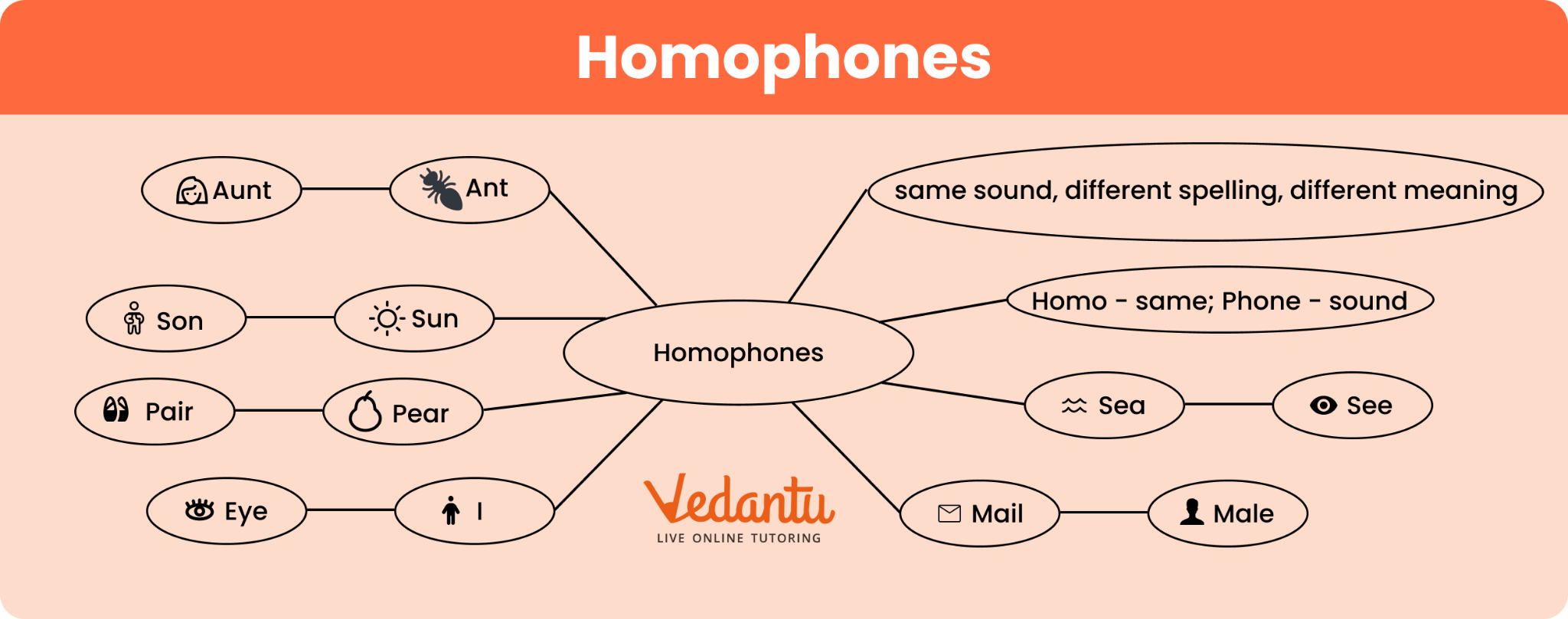




Homophones Examples: Definition, Meaning and Uses
FAQs on Homophones: Definition, Examples, and Fun Exercises
1. What are homophones?
Homophones are words that sound the same but have different meanings and often different spellings. For example, "sea" and "see" are homophones because they are pronounced the same but mean different things.
2. Can you provide some homophones examples?
Certainly! Examples of homophones include "to," "too," and "two" as well as "their," "there," and "they’re."
3. What are some common homophones words?
Common homophones words include "flour" and "flower," "bare" and "bear," and "write" and "right."
4. Can you give homophones examples with sentences?
Sure! Here are some examples:
"I need to buy a new pair of shoes." (To)
"She has two dogs." (Two)
"The sea is very calm today." (Sea)
"Can you see the stars?" (See)
5. What is homophones?
Homophones are words that sound the same when spoken but have different meanings and spellings. They can sometimes be confusing because their pronunciation is identical, but their meanings differ.
6. What is a homophones list?
A homophones list includes pairs of words that sound the same but have different meanings and often different spellings. For example, "night" and "knight" are homophones.
7. Can you provide examples of homophones with sentences?
Yes, here are some examples:
"She ate a piece of cake." (Piece) vs. "The piece of paper is on the desk." (Piece)
"He will row the boat." (Row) vs. "She is going to the row of houses." (Row)
8. How can I use homophones in sentences?
Using homophones in sentences involves choosing the correct word based on its meaning. For instance:
"He went to the store to buy some milk." (To)
"Their car is parked over there." (Their)
9. What are homophones examples with sentences?
Here are some examples with sentences:
"I will go to the park too." (To/Too)
"She can’t bear to watch the movie." (Bear/Bare)
"The knight rode into the night." (Knight/Night)
10. Can you give more examples of homophones with sentences?
Certainly:
"He made a mistake in the report." (Mistake) vs. "He made a cake for the party." (Cake)
"We need to write a letter." (Write) vs. "The right answer is clear." (Right)























